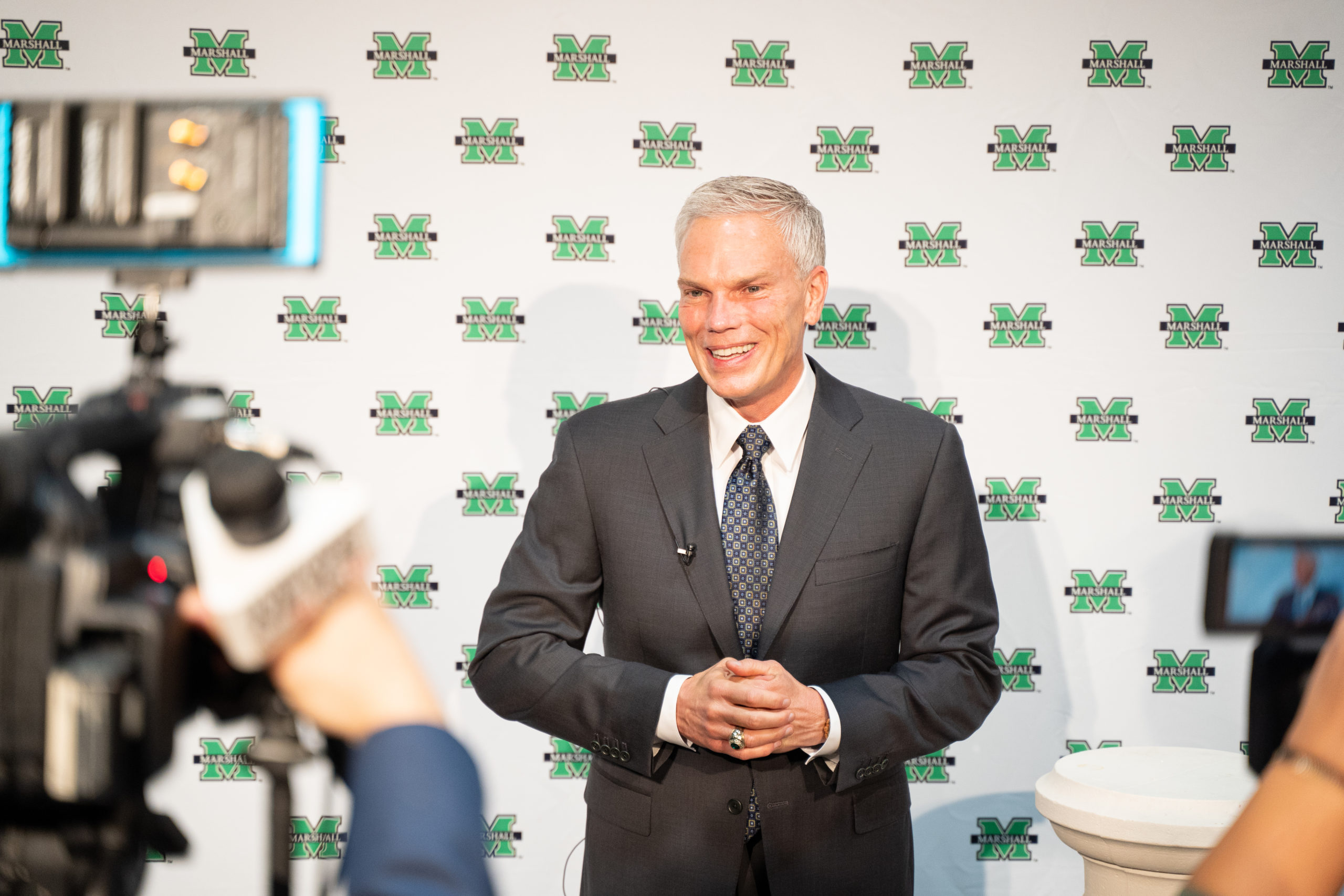“I am being called to follow my purpose,” Brad wrote in an inspired LinkedIn post…
Brad D. Smith Recaps His 100-Day Listening Tour as Marshall University’s President

On January 1, 2022, Brad D. Smith stepped into a role distinct from the various experiences that had previously defined him as a business leader. Just recently the executive chairman of Intuit, a software company located in Silicon Valley, Brad pivoted to a new sector entirely: academia. Brad entered his new position as the President of Marshall University with the tenacity, humble leadership and strategic mind that has traditionally defined his career.
When accepting his new role, Brad recognized that — like any industry — higher education was facing its own unique set of challenges. To understand the issues facing Marshall specifically, and to identify areas of improvement for the school, Brad underwent a 100-day listening tour. During this tour, Brad participated in 38 listening sessions with various publics including students, alumni, classified staff, community leaders, the Board of Governors and more. From these sessions, more than 1,200 suggestions were solicited.
To analyze the mass amount of data, Marshall University partnered with an outside vendor to analyze the results — an effort that identified five key themes, which Brad and his colleagues at the school are now referring to as the “Big Five.”
On April 21, 2022, Brad shared these findings during a Marshall University Board of Governors meeting, along with his initial plans to tackle the challenges and concerns head-on.
The Five Key Focus Areas
Among the various stakeholder groups, Brad explained that the following five themes were brought up the most frequently, identifying them as priority initiatives for the immediate future.
Enrollment
The first topic Brad discussed was recruitment and enrollment — an area of concern raised by 100 percent of stakeholder groups. It was identified that there is an urgent need to reverse a multi-year trend in declining enrollment. To turn the trend around, Brad discussed investigating new methods of recruiting, marketing and outreach. He also touched on expanding the pool of prospects to include non-traditional populations in addition to widening geographic reach.
Student Experience
While participants communicated a strong need to bring in new students, there was also a recurring theme related to the experience of those currently attending the university. During the tour, participants expressed a need for more resources such as tutoring and counseling, as well as improvements to mental health programs and more career-readiness training and programs.
Staff and Faculty Needs
The third most-referenced topic among participants was the obligation to better address the needs of faculty and staff. Workload, compensation, professional development opportunities and a better balance between research and teaching were all topics raised as part of this theme during the tour.
Diversity, Equity and Inclusion
Participants also called for a higher focus on diversity and inclusion. Stakeholders communicated a desire to see a more diverse student body, staff and faculty body.
The Marshall Story
Finally, 89 percent of stakeholder groups encouraged stronger penmanship in relation to the Marshall story. Participants are eager to define what makes Marshall University unique and clearly articulate the Marshall vision and mission to the world.
Mobilizing on The “Big Five”
Brad was incredibly thankful for the deep level of participation during the tour. As he said during the Board of Governors meeting, “Your contributions are much appreciated and are illustrative of the power of shared governance.”
Now that the themes for desired improvement have been identified, he is intent on mobilizing on them as quickly as possible. After sharing out initial tactics, noting that together the team would course-correct along the way, he emphasized that progress and success would continue to come from collective contribution and the power of “We” that Marshall is known for best.